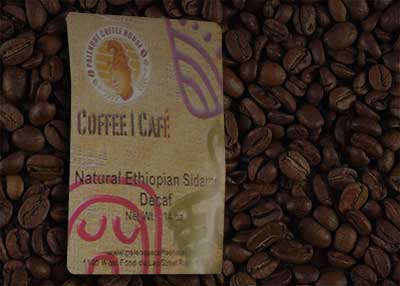Posted on Mar 12, 2012

Because Central America is such a hub of good coffee growing, much of the world’s coffee production starts there (casting aside, for the moment, the dominance of Brazil and Vietnam). Here are the countries of Central America that cracked the world’s top 20 coffee exporters in 2010: Guatemala: in Guatemala, coffee is an export on par with sugar, vegetables, and even bananas. It is the top coffee-exporting country in Central America (even beating out the much-larger Mexico, the terrain of which is not entirely used for growing coffee). Mexico: Though not all of Mexico is used for coffee cultivation – and which country can say that? – it is still a top-ten producer of coffee worldwide thanks to its coffee-friendly soil in the southern portions of the country. Honduras: Climate-wise, Honduras is actually part of the Western Caribbean Zone, which is good news for this small country because it means that much of its climate and geology is well-suited to the growing of coffee. Costa Rica: Perhaps not the top exporter of coffee in Central America, but still a prevalent coffee exporter with a number of regions that are highly regarded by seekers of single origin coffees. El Salvador: This tiny Pacific coastal nation has been based on a coffee-growing economy since the 19th century, which means there’s a rich history of good coffee to look back on. Nicaragua: Coffee is a top export in Nicaragua, as it is for many of the small economies of Central America, with coffee dominating the high slopes of Nicaragua and “everything else” taking place on lower ocean-bordering land. Of course, with Panama not on this list, it’s important to remember that the amount of coffee exported from a single source does not necessarily correlate to the quality of coffee produced...
Read More »
Posted on Mar 8, 2012

It’s tempting to think of the entirety of Mexico as part of Central America – and geopolitically, perhaps, it is – but the truth about coffee growing is that it is mostly an equatorial proposition, which means the closer you are to the equator, the more likely it is that you’re standing on land that is capable of producing good-quality coffee. (Dutch coffee growing in Europe, of course, demonstrates that this is not a hard-and-fast rule and that exceptions can be made thanks to other factors like altitude, soil, etc.). For that reason, much of Northern Mexico is much like the southern United States climate-wise, and therefore not a perfectly suitable environment in which to grow coffee. Central American countries closer to South America – such as Honduras, Guatemala, etc. – tend to rely on coffee as an export much more than countries that don’t have the same suitable environmental factors. In the previous section, Africa, it was easy to find a multitude of different types of coffees, from Arabica to Robusta, and to smaller varieties of each such as Bourbon coffee. Though Central America also enjoys a great degree of variability in its coffees, it is far and away a land of Arabica-based coffees. Because Arabica coffee is preferred by coffee drinkers around the world, there are a number of single origin coffee types from Central America that many coffee enthusiasts can get behind. Central America’s main contributions to the world of coffee are in the world of Arabica, with specific varieties such as Caturra – a member of the Bourbon family – and Panama, which is of course grown in Panama (but also Costa Rica). Generally, the coffee plants in central America tend to be hearty in that they are resistant to disease, and many people in Central America are moving to the full open-to-the-sun method of growing that was not always the dominant way to grow...
Read More »
Posted on Mar 5, 2012

Another single-origin coffee that is worth exploring as we spend our time on Africa is coffee that comes from the Bourbon line of coffees. You’ll recall that “Bourbon” coffees were first introduced to the island of Reunion by French missionairies; the tree quickly mutated and the type of coffee became its own “brand,” essentially. Now, Bourbon coffees are grown throughout Africa, particularly in the following regions: Reunion Bourbon: The Bourbon plants actually produce a lot of fruit. The Reunion Bourbon could be considered the purest form of Bourbon coffee as this is where the coffee tree first mutated into its current form. The former Isle of Bourbon – now called Reunion – is off the eastern coast of Madagascar, far out in the Indian Ocean. Bean description: Described as sweet and nutty, the beans of Reunion Bourbon also come from a greater yield per tree than the Typica tree, the other major Arabica tree used throughout Africa. Africa Magayuez Coffee: Grown in Rwanda, this type of coffee is often compared to the type grown in Kenya. It is known for having a good creamy body with both the sweetness of Yirgacheffe and the acidity of Kenyan coffees. Bean description: The aroma of this bean could best be described as “pleasant” – as it should be. There’s also a hint of citrus that surprises many people, which keeps the taste of the bean clean and energizing. Burundi Bourbon: The Burundi region is actually along the Nile-Congo watershed, with the political borders of Burundi pitting it next to Tanzania, Rwanda, and the Democratic Republic of the Congo. There is a lot of Burundi Bourbon that comes out of this region considering how small it is, and the coffee grown there tends to be up to two kilometers above sea level. Political issues in the Burundi region may make this type of coffee more difficult to get in coming years. Bean description: The Bunundi Bourbon coffee bean is typically considered a great variation on the Bourbon considering the quality of the soil and the elevation in which it’s grown. The bean is often compared to Magayuez...
Read More »
Posted on Mar 1, 2012

Although Kenya is next to Ethiopia, a funny fact is that Kenya did not start cultivating coffee until almost the 20th century. Then, the first coffee trees were brought over not from Europe or Asia but from Reunion, the island famous for its Bourbon types of coffee beans. Many people the world over insist that Kenya is one of the best sources of coffee beans in the world, and it’s hard to debate them. But Kenya is listed here as an example of how to “read” many different coffee labels; it’s such an important skill for the coffee lover that we’re going to take the time to discuss Kenyan coffee grading here. Here are the orders of the Kenyan grades by price, highest to lowest: AA – (a coffee grown over 6,600 feet above sea level; widely considered the best Kenya has to offer) AB C PB T TT UG1 UG2 UG3 Generally, the higher the grade, the larger the bean will be – though this is not the only factor in grading the quality of a Kenyan coffee bean. If you are looking for single origin Kenyan coffee, pay attention to the major regions in Kenya that produce coffee, most of them in the high altitudes that surround Mount Kenya: Kisii Bungoma Nakuru Kericho Nyanza Aberdare Range The acidic soil of Kenya makes it ideal for growing very flavorful Arabica beans, which is one of the reasons so many coffee lovers that understand the different type of beans will not refuse a cup of coffee from a single origin in Kenya. There are some single origin coffees worth exploring more deeply: K7: This is a Kenyan version of the French Mission bourbon coffee that is so popularly grown all along Africa’s eastern portions. This type of coffee is actually grown at a specific estate – the Legetet Estate – in Kenya, which makes it among the purest of the single origin coffees. Bean description: The beans are resistant to coffee berry disease and is a hearty bean capable of growing at lower elevations as well. Many coffee lovers find that it produces a lovely aroma with a rich taste. Kenyan Blue Mountain: You’ll hear about this variety, which actually originates in the Blue Mountains region of Jamaica, later on. As this variety is also grown in Kenya, it is worth mentioning...
Read More »
Posted on Feb 27, 2012

Ethiopia, where as legend has it coffee’s caffeinating effects were first discovered, is today a rich, lush source of some of the finest single-trade coffees available. It’s worth exploring so much, in fact, that it’s best divided up into the single origin regions that produce noteworthy coffe. Harar: It could be said that Harar is in the “cradle of coffee civilization” considering its location in northeastern Ethiopia and proximity to the famous coffee country of Yemen. Harar is actually a town in Ethiopia of some 150,000, and its altitude (over a mile above sea level) make it ideal for certain types of Arabica to grow here. Bean description: A Harar coffee bean is medium sized and has a yellowish tint away from the standard green of unroasted coffee pits. Harar beans are dry processed, which means that they are sorted by hand. Generally, the laborers working in Harar know how to distinguish between individual types of Harar beans such as Longberry, Shortberry, and Mocha beans. Like Sidamo, the flavor of Harar coffee is generally spicy, chocolaty, and has a crisp, almost citrusy, tint. Sidamo: Getting its name from the Sidamo province in Ethiopia, this is a popular single origin coffee bean among those in the know. In fact, because of the coffee grown here, Sidamo has enjoyed prosperity in trading in years past, at least relative to other regions. Bean description: Smaller and greyer than the Harar bean, Sidamo beans tend to share flavors similar to that of the Harar coffee bean. Yirgacheffe: Sometimes written as Yirga Cheffe, this is a coffee bean that is known to have “less body” but is capable of producing amazing flavors. Yirgacheffe is often wet processed (or washed) rather than dry processed like Harar beans. Bean description: The flavor of the bean is typically described as nutty or chocolaty, giving it a subtle difference from Harar and Sidamo to those people who are experienced with single origin coffees. Limu: Sometimes also spelled “Limmu,” this type of coffee is similar to Yirgacheffe in that it is frequently wet processed. The acidity content of these beans is actually quite low, which means that people who struggle with drinking coffee because of acid reflux problems may find some relieving effects in Ethiopian Limu coffee. Bean description: Contrasting with the other single origin Ethiopian beans, the Limu is actually quite “fruity” as far as coffee go – it has a subtle almost wine flavor that mixes well with its other spice flavors. It’s a great-smelling bean, as...
Read More »






